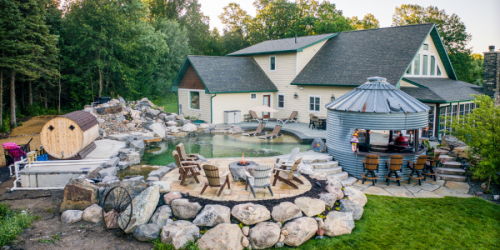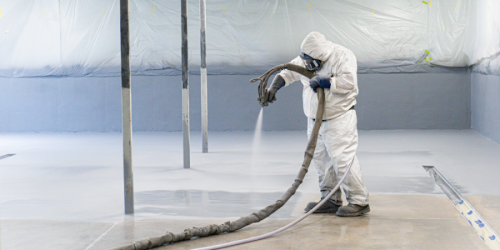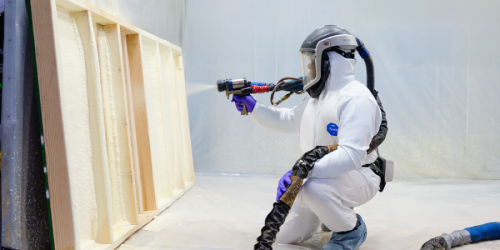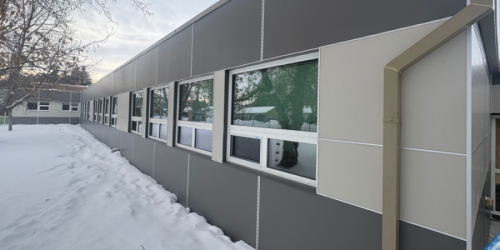Q&A Forums
spray pattern Post New Topic | Post Reply
| Author | Comments |
|---|---|
|
larry kritsch
Posted: Apr 24, 2008 05:08 PM
|
spray pattern
were fairly new to spf & are spraying 2lb closed cell foam.spraying with a fusion gun,2929 chamber with a round tip.spraying on round tanks with about 3' radius.as hard as we try we cannot get a flat finish with out alot of "ridges" & uneveness.its killing us timewise to smooth all the tank surfaces out even with foam plainer.is it our gun setup or just crappy technique?if so what is the proper way to apply?should we go to a less dense foam?these are hot water tanks and there was no specs on foam density,just specified 3" of foam.thanks
|
|
mason
Posted: Apr 25, 2008 09:05 AM
|
It is difficult to obtain a smooth foam surface when spraying "hot" tanks. The surface temperature will have a tendency to boil the blowing agents causing a rough surface,blowholes, pinholes, cracks and fissures. Talk to your foam supplier about the situation. They may have a foam with a slower reaction profile that can achieve a smoother finish. For example in roofing applications, SPF manufacturers frequently have summer formulas to allow smooth surfaces over hot roofing substrates. In P******nix, roof substrates can exceed 180 degrees F very easily. You should not spray foam on "hot" surfaces greater than what the supplier recommends. This typically ranges between 180 to 2o0 degrees F. Again ask your supplier |
|
Gordon Howard
Posted: Apr 26, 2008 03:56 AM
|
The reality is that you will never get a perfectly smooth foam surface on a vetical application. Get used to the ridges. Even the slightest overlap of passes will result in exponential thickness. Even on smooth roof surafecs with slow foam, there will be overlapping ridges. Sorry for the bad news. |
|
mason
Posted: Apr 26, 2008 11:01 AM
|
Hate to disagree about spraying tanks, There is a technique. You can make tanks look beautiful without ridges, lumps or valleys. Just keep the spray gun pattern as close to perpendicular to the surface as possible and keep it from rolling over to the curved surface, overlap the passes approximately 4 to 8 inches, (depending on size of pattern) |
|
Gordon Howard
Posted: Apr 27, 2008 03:31 AM
|
Yeah, your right. just remember to strap on your robotic arm first for the perfect speed, distance, overlap etc... And don't take your finger off the trigger. |
|
mason
Posted: Apr 29, 2008 02:37 PM
|
I have sprayed thousands of tanks from very small to very large, the technique is not difficult or tiring. You do have to trigger and watch your pass line connections. |





























